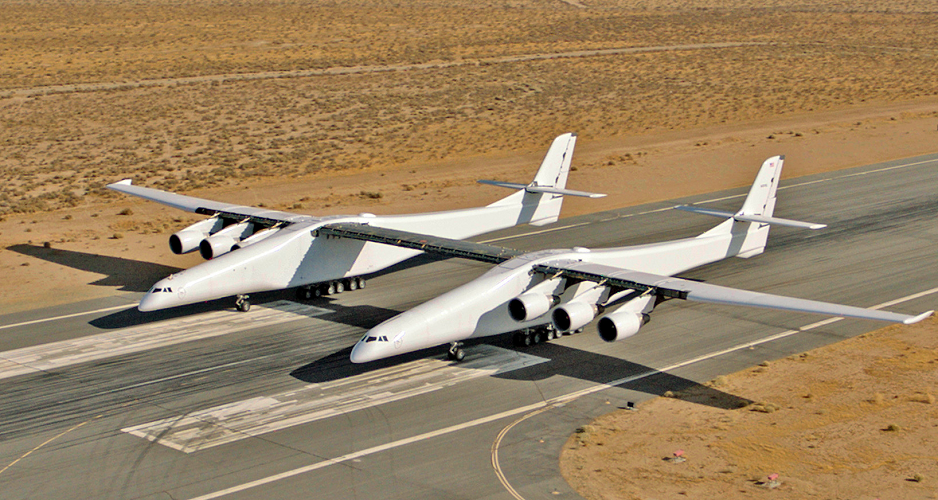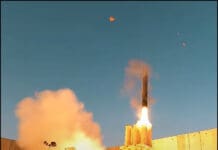This post is also available in:
 עברית (Hebrew)
עברית (Hebrew)
Last month, the largest plane in the world has completed its first flight. Stratolaunch Systems Corporation has successfully managed to complete the first flight of the world’s largest aircraft, the Stratolaunch. With a wingspan of 385 feet, dual fuselage design and 6 Boeing 747 engines, the Stratolaunch is a plane like no other.
The massive aircraft flew for 2.5 hours over the Mojave desert in its maiden flight. The Stratolaunch managed to reach an altitude of 17,000 feet and a top speed of 189 miles per hour. During the first flight test pilots tested the aircraft flight controls including, speed control, yaw and roll maneuverability, and pitch control. The flight crew also conducted simulated landing approach exercises.
The Stratolaunch aircraft is a mobile launch platform that when fully developed, will assist launching spacecraft and satellites into orbit. Today, launching a satellite into space, regardless of size and weight, is an incredibly expensive and long process with long wait times and high risks. Stratolaunch Systems are attempting to ditch the traditional rocket launch method of space entry, and hoping to redefine the methods used to send satellites, and maybe even people, into orbit.
Stratolaunch.com mentions that they intend to make satellite launches as simple and routine as buying a plane ticket is today.
The Stratolaunch is specially designed with a dual fuselage design allowing the aircraft to carry very heavy payloads of up to half a million pounds under its central wing, in between both fuselages. With 6 powerful Boeing 747 engines, the aircraft is capable of a maximum takeoff weight of 650 tons.
The way the aircraft is designed to launch payloads into space via a launch vehicle that will be connected to the aircraft under its central wing. Once airborne, the airplane will ascend to a cruising altitude of about 35,000 feet. When the plane reaches the appropriate altitude, the rocket powered launch vehicle is released, its motors ignite and is then flown into orbit. Meanwhile, the Stratolaunch heads back to landing the same way any other airplane would land.
Currently, there are two launch vehicles in the development stages, and two more in the design stages. The launch vehicles in development are the Pegasus, which has already been flight tested, and the Medium Launch Vehicle, which has an expected first flight scheduled for 2022. The Pegasus has a max payload capability of 370 kilograms, whereas the Medium Launch Vehicle has a max payload capability of 3,400 kilograms.
The two other launch vehicles are the Medium Launch Vehicle-Heavy and the Space Plane. Where the former is intended to launch heavy payloads into space, up to 6,000 kilograms, and the ladder is capable of sending medium sized payloads or a manned crew into space.
By using an aircraft to send objects into orbit, the company manages to overcome bad weather, air traffic and other variables that cause delays in rocket launches, making it significantly easier to launch satellites into space.
With satellites becoming smaller and easier to develop, the demand for rocket launches grows. With Stratolaunch, satellites can soon enough be sent to space at a much lower cost and a more routinely matter.


























